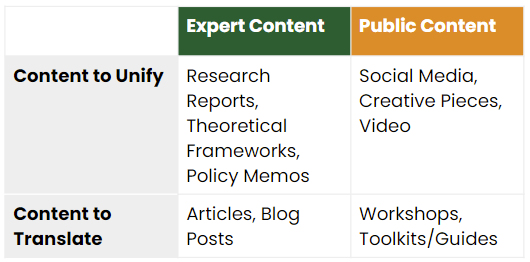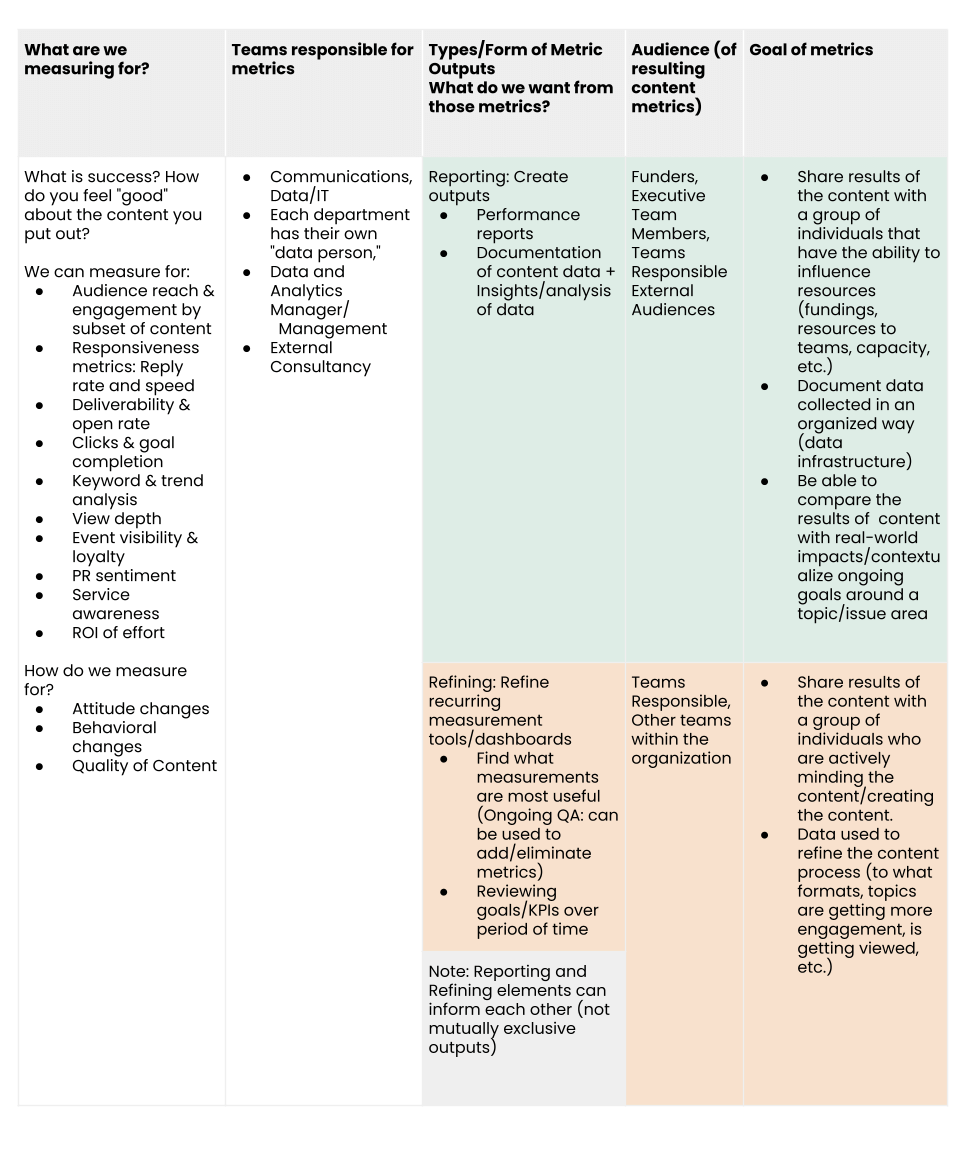Each year, your organization’s outreach, fundraising, and program teams create a wealth of digital content: think of all those reports, donor emails, Twitter posts, policy toolkits, event invites, etc. Collectively, it’s “obvious” these various tools are helping deepen engagement among supporters. But how easy is it for you to measure and communicate the real impact of these different content investments?
The first study of PTKO’s new Data Innovation Studio explores the impact of digital content within nonprofit organizations—what it means, its relevance in mission-driven work, and the role of data in content development. In this post, we’re excited to summarize key insights from the research study.
The purpose of digital content
We interviewed 16 experts across the mission-driven sector to learn how they think about the digital content they create and oversee. From these conversations, we found that digital content plays two major, interconnected roles in helping nonprofits achieve their missions:
- Content as unifier ― Content exists to strengthen an organization’s brand, messaging, and image. It is a cultivated presentation of the organization that is shared to various audiences to align their image of the organization.
- Content as translator ― Content translates or synthesizes information shared by the organization.
Likewise, there are two different types of content, distinguished primarily by the intended audience:
- Expert content ― Highly technical, and intended for stakeholder groups with relevant expertise and an appetite for detail
- Public content ― Intended for audience members who aren’t experts in the content topic (Note: content can vary in complexity and length, and may be pithy or technical based on the purpose and level of interest of the audience member.)
Examples of Digital Content Types

As a note, the examples in the matrix above are content formats that often fulfill certain functions, based on the conversations we’ve had. The roles are not hard categories to define a content piece, but rather descriptors of how content interacts with audiences in the context of an organization.
Assessing the impact of digital content
How do stakeholders across an organization agree on what is “impactful”? And how do these standards of impact hold up against real-world benchmarks for creating positive change in the world?
Experts we interviewed acknowledged their struggle in grasping and quantifying the full impact of their teams’ work—even as digital content is universally understood to be important, necessary, and capable of influence. In many nonprofits there is a bias towards reactive reporting of outputs, due in part to time constraints and a lack of deep expertise with data and analytics within the organization. Where this exists, it hinders a proactive approach to informing content development. In addition, different internal stakeholder groups tend to ask for different metrics, creating inefficiency in reporting and benchmarking.
Nevertheless, many nonprofits are doing excellent, important work measuring their success. The table below summarizes the different ways that organizations assess and report on the impact of their digital content:
Measuring and refining content data
The value of data strategy
Strategy is necessary for determining impact. In particular, we observed that:
- Content professionals benefit when they establish proactive strategies to determine which data to collect (based on what’s most important for understanding a piece of content throughout the content development process)
- Quantitative and qualitative data both have value as part of a holistic data approach
- It can be helpful to measure resources spent in creating and promoting digital content across the content lifecycle (to provide deeper context to output and outcome measures, informing future decisions on resource allocation)
- Content development often involves relationships and collaboration across different teams and departments. Sometimes it can be helpful to capture information on how this collaboration works (and doesn’t work) to identify potential process improvements.
Overall, our interviews with experts suggested the need to move to a more open, integrated model of content impact that takes into account data from different steps of the content development process, transparency across an organization (and between organizations), and a more intentional strategy that connects the quality of content with the organization’s mission.
Learn more about data & digital content
The goal of PTKO’s Data Innovation Studio is to shed light on the commonalities between organizations and develop a diverse community of data practitioners across the sector that are ready to explore a more innovative and strategic approach to data ― and to share this knowledge and practical outputs with the nonprofit sector.
We invite you to join us on this journey! You can read our full 2021 Content Report here. If you are interested in learning more about our content impact study or providing your unique perspective, schedule a conversation with our team!





